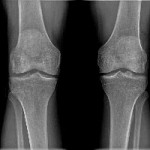We should never underestimate the impact of the life sciences (like medicine) on the life of our planet and species over the last couple of centuries. Indeed some sources suggest that human life expectancy across the globe rose on average 35 years per person in the twentieth century.
As many readers know I consider Jonas Salk, the person who discovered the polio vaccine and refused to patent it, to be one of the very great figures of the last century. Sadly while politicians seem to get their statues all over the place his vital work goes almost unrecognised.
The scourge of polio (and that is not a cliché) is well on the way to being eradicated across the globe. Here I feel I must pay tribute to the work of Rotary International’s End Polio Now campaign. I’d strongly recommend their web site http://www.endpolio.org/ if you have not already visited it. In the UK in the present century nobody has contracted polio to the best of my knowledge.
However what I was unaware of until recently was the concept of post-polio syndrome. And I was
reminded of it when I re-read a recent interview with Julia Roberts from our blog where she talked about her then recent diagnosis with cancer but also about being a polio survivor. You can read the interview here https://patienttalk.org/?p=131. In it she mentions post-polio syndrome and its impact on her life.
So I thought it would be useful to investigate further. Because while the disease has disappeared in all but a few countries, its effects are still very much with us.
In fact it has been suggested that there may be around half a million people in the USA alone who suffer from post-polio syndrome. So what actually is it?
Around 75% of people who have had polio will go on to suffer from post-polio syndrome (PPS). PPS seems to occur between 10-30 years after the initial polio attack. The symptoms include:-
a) Fatigue – both physical and mental.
b)Muscle and joint pain.
c) Atrophy (weakness) of the muscles. This in turn can lead to difficulties in movement especially walking.
d)Sleep apnea.
e) Sensitivity to cold.
While this illness is not fatal it can obviously affect a person’s ability to lead a full life.
We would like to take this opportunity to invite people who have PPS to share their story with our readers. This we hope will raise awareness of the condition. Please feel free to use the comments box below to share your PPS journey.
It would be great if you would consider the following questions as part of your contribution:-
a) How old were you when you first contracted polio? How long ago was this?
b)When did you start to suffer from PPS?
c) What were you primary symptoms? How were they treated?
d)Overall what effect did PPS have on your lifestyle?
Please not that this is only a guide. Feel free to contribute anything you think may be of interest.
Many thanks in advance.


